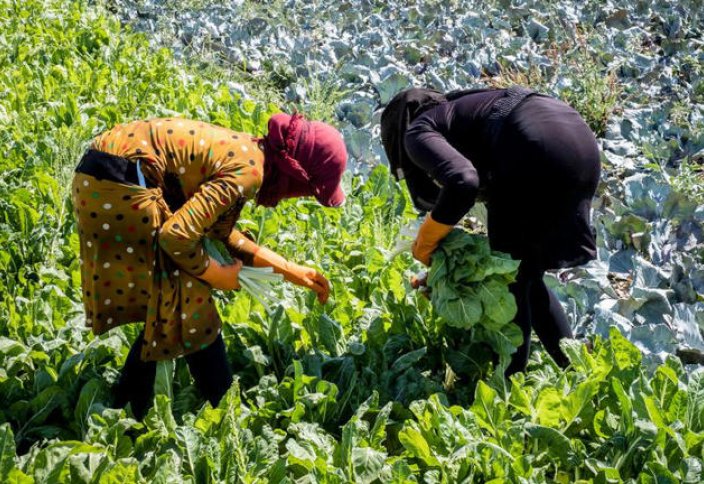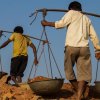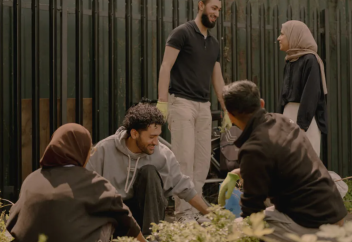|
ЕС и США все еще борются с нарушениями прав на детский труд
|

12 июня отмечается Всемирный день борьбы с детским трудом, мероприятие, организованное Международной организацией труда и ЮНИСЕФ. Несмотря на некоторый прогресс, примерно каждый десятый ребенок в мире работает таким образом, который считается вредным или незаконным.
Детский труд остается глобальным бедствием. Несмотря на значительный прогресс в его сокращении с 2000 года, события последних лет, такие как пандемия COVID-19 и различные конфликты по всему миру, ввергли миллионы семей в нищету и угрожают остановить прогресс.
Тем не менее, в последнем докладе ЮНИСЕФ и Международной организации труда (МОТ) по этой теме говорится, что произошло снижение по сравнению с предыдущим докладом четырехлетней давности: в 2025 году детский труд был задействован на 138 миллионах человек, по сравнению со 160 миллионами.
«Содержащиеся в нашем докладе выводы вселяют надежду и показывают, что прогресс возможен», - заявил в пресс-релизе Генеральный директор МОТ Жильбер Ф. Унгбо. «Но мы не должны быть ошеломлены тем фактом, что нам еще предстоит пройти долгий путь, прежде чем мы достигнем нашей цели по искоренению детского труда».
Что представляет собой детский труд?
Нина Маст, аналитик Института экономической политики в Вашингтоне, округ Колумбия, сообщила DW, что детский труд - это эксплуататорский или угнетающий труд несовершеннолетнего или "любая работа, которая является чрезмерной в том смысле, что она мешает образованию, здоровью или благополучию ребенка".

Вредный детский труд, как правило, ассоциируется с беднейшими странами мира. По словам Клаудии Каппы, старшего советника ЮНИСЕФ по статистике и мониторингу, в странах Африки к югу от Сахары проживает две трети всех детей, занятых детским трудом.
Тем не менее, она предупредила, что это также проблема для стран с более высоким уровнем дохода, таких как Европейский союз и Соединенные Штаты.
"В то время как детский труд более распространен в странах с низким уровнем дохода, он все еще существует в странах с высоким уровнем дохода", - сказала она DW. «Часто это скрыто в сельском хозяйстве, неформальной работе или в маргинализированных сообществах. Бедность, неравенство и изоляция делают определенные группы детей уязвимыми, независимо от того, где они живут».
В США наблюдается рост
Nina Mast argues child labor breaches are not just about unpaid or hazardous work but also about conditions such as hours worked or any "excessive or exploitative work that interferes with education."
Her main focus is on the US where breaches of the country's Fair Labor Standards Act — the main worker protection legislation in the coutry — have increased since the pandemic.
According to the US Department of Labor, the number of children found employed in violation of federal child labor laws increased 31% between 2019 and 2024.
"I think that we should consider this a crisis that has not been resolved in terms of the recent increase in violations," she said, adding that the Trump administration has announced plans to weaken various labor protection laws.

She says the typical violations in the US involve minors working too late or for too long, or cases where minors are employed using equipment that is prohibited for their age or doing jobs that they should not be doing based on their age.
Another major problem, she added, was the agriculture industry, where children as young as ten are sometimes employed in harmful work.
"A problem that we haven't addressed in the US is the fact that the standards are much lower in agriculture," said Mast. "Agriculture is the deadliest industry for children in terms of the fatality rate. That's an issue that remains unaddressed."
Тоже европейская проблема
According to the International Labour Organization, around 71% of all child laborers are in agriculture. That is also a major part of the problem in Europe, according to Marco Dubbelt. He is a director with Global March, a network of trade unions and civil society organizations dedicated to the elimination of child labor, slavery and trafficking.
He says there have been recent violations in Albania, Romania and in the fruit and vegetable sector in Italy. "It doesn't hit you like a child working in the mines in Congo," he told DW. "But it's very dangerous work. The children work with pesticides, work under enormous heat stress. It's really unhealthy for the child."

UNICEF's Claudia Cappa points out that prevalence of child labor in the EU is low compared to global levels, but says "it exists in more hidden forms, including in agriculture, informal services, and among marginalized communities."
Both Cappa and Dubbelt caution that reliable data in higher-income countries is hard to come by and that there is a lack of reporting.
Back in 2021, the EU signed up to a global initiative to designate 2025 as the year to end child labor in all forms. While that goal has not been achieved, the EU does have relatively strong legislation aimed at protecting children and minors from harmful labor practises.
The EU Directive on the Protection of Young People at Work requires member states to ban the employment of children under 15 or those still in full-time education, with some exceptions. It also sets out various obligations for employers with regards to young workers' health and safety.
Stephen Blight, UNICEF's senior adviser on child protection, believes the EU's introduction of its Corporate Sustainability Due Diligence Directive, which came into force in July 2024, was an important step towards tackling the problem. He told DW the directive has "enormous potential to contribute to the respect and protection of children's rights, if fully and properly implemented."
However, he expresses concerns over the EU Commission's so-called Omnibus proposal, which aims to simplify and reduce certain regulations and reporting requirements for businesses across the bloc.
Blight argues that proposal could weaken progress in relation to EU supply chains, pointing to the fact that one of the plans is to limit the extent to which EU companies will have to carry out due diligence on suppliers. "It risks overlooking the deeper parts of supply chains, where the worst forms of child labor often occur."
Marco Dubbelt agrees that one of the biggest challenges for the EU in relation to child labor relates to its supply chains from outside the bloc.
He thinks the problem is bigger than what can be seen but emphasizes again that a lack of reliable data is a major issue, and that more research and reporting is required.
"What I've seen is that a lot of children are connected with supply chains, but it's sometimes very difficult to make that connection because so much of the work is off the grid, and under the table."
Редактор: Уве Хесслер
Author: Arthur Sullivan













